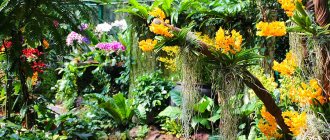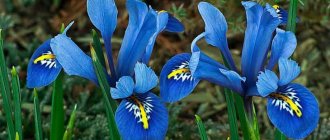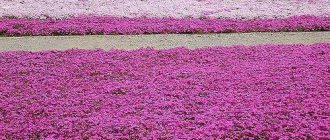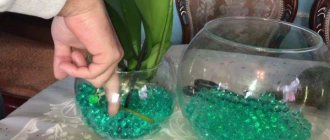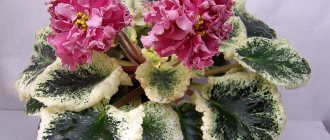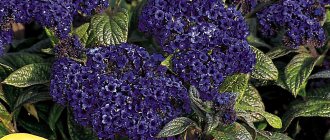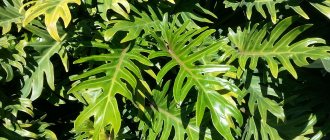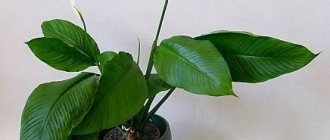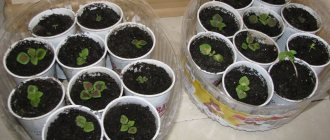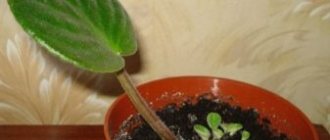Homemade sedum (sedum) - what kind of plant is it, family
The herbaceous perennial sedum sedum is a representative of the Crassulaceae family and grows in the form of shrubs, but ground cover varieties and subshrubs are often found.
Sedum, or sedum, began to be cultivated in ancient times
Brief description of what sedum looks like
The fleshy oval leaves of the bush are located evenly and alternately on the stems. The plates can be either opposite or whorled. Their size and color are also varied, as is the shape of the inflorescences.
Note! Small sedum flowers can be collected in the form of umbrella, racemose and corymbose inflorescences. The bush blooms in mid-summer and completely fades with the onset of autumn.
Medicinal properties
Due to its healing properties, sedum is widely used in folk medicine and pharmaceuticals. This herb is often grown at home for the purpose of preparing tinctures and decoctions.
Medicinal properties of sedum flower:
- normalizes blood pressure;
- fights colds;
- starts metabolism;
- reduces weight, as it is able to burn cholesterol;
- acts as a calming agent for nervous conditions.
Botanical description of the plant
Sedum Kamchatka is a representative of medium-sized sedums. Dense, raised stems reach a height of 20-25 cm on average, but can grow up to 45 cm. The rhizome is elongated, thick, and becomes woody over time. The roots are thin. The leaves are simple, oblong, alternate or opposite. In winter, shoots and leaves die off; in April they grow from the buds of the rhizome. The inflorescences are loose, the flowers are sessile, on short stalks. The petals are lanceolate, with sharp tips, and bright yellow. The anthers are orange, the stamens are equal in length to the petals. The fruits are red, fused at the base. As it ripens, the color changes to orange.
Kamchatka sedum
Information. The lifespan of Kamchatka sedum is 10-15 years. After 4-5 years, the decorative appearance of the plant begins to deteriorate.
The plant is distributed in the Far East of Russia, Korea, Manchuria, Japan and China. In nature, it grows on rocky soil, rocks, and grassy slopes.
Popular flower varieties
Sedum varieties and types - the best varieties for the garden
The plant has many species, and the first hybrid sedums began to be bred at the beginning of the last century.
Large sedum (Sedum telephium)
The description of the large sedum is classic for the genus of these plants. The homeland of the bush is Europe. This sedum has straight stems and small, light green, smooth, oval-shaped leaves. A large subspecies grows up to 50 centimeters and blooms with red-pink flowers.
White variety of sedum
White sedum (Sedum album), or soapwort
Soapwort or white sedum is a creeping groundcover subshrub that is grown to fill flower beds and flower beds. The plant tends to grow quickly and change foliage several times per season. In spring it is green in color, then acquires a burgundy tint. Blooms with former fluffy flowers from July to August.
Sedum acre
The caustic species is also called yellow sedum. Its characteristic feature is the pale yellow flowers, which are unusually large for this genus of plants. Small leaves are drop-shaped, densely located on the stems and from a distance look like large convex scales.
False sedum (Sedum spurium)
False sedum has creeping shoots reaching a length of up to 30 centimeters. The shrub has smooth, light green leaves that flare slightly at the outer edge. The inflorescences consist of many small pink flowers in the shape of stars.
Additional Information! False pink sedum is popular among gardeners in the northern regions.
Sedum spectabile (Hylotelephium spectabile), or sedum spectabile
The prominent sedum has a wide range of inflorescence colors, ranging from yellow, purple, pink and white. A low bush of 40-50 centimeters has spreading burgundy-brown shoots and glossy leaves of a rich green hue.
The subspecies has many interesting ornamental varieties. Sedum Mix has shoots that are more uniform in color with foliage, while Sedum Winky is distinguished by horizontal ground cover growth.
Sedum burrito
Sedum Burrito is one of the most beautiful ornamental varieties that is in demand in indoor floriculture. It has elongated hanging shoots with small and dense teardrop-shaped leaves. Due to the shape of the bush, it is often grown as a hanging plant.
Types of indoor sedums
Red-colored sedum/sedum
All domestic sedums are united by the Crassulaceae family. The scientific name comes from the Latin word sedo and means to subside. The leaves of some plants are used as a pain reliever. There is a legend that Telephos, the son of Hercules, healed a severe wound with sedum.
So, what are the most common homemade sedums:
- Weinberg's sedum. The fleshy leaves resemble an ovoid shape, are bluish-gray in color with a waxy coating and are collected in a rosette. The stems are straight, but when they start to grow, they creep.
- Morgan's sedum. This plant is also called “monkey tail”. It serves as an excellent decorative decoration. Homeland South America. Grows well in both tropical and temperate climates. Flowering is rare, but exuberant. Pink and purple flowers are located at the ends of drooping stems. Morgan's sedum is very dangerous at home; it contains toxic substances. Therefore, it should be kept away from small children who want to try everything. If you eat a piece of homemade sedum, it will cause severe poisoning.
- Siebold's sedum. An ampelous plant, the leaves are small, about 1 cm long, colored with green and blue tints, hanging stems with round leaves of light green color are collected from three pieces into whorls.
- Sedum Lineare (linear). A miniature plant with thin and creeping stems, on which rosettes of leaves are densely located.
- Thick-leaved sedum, plant height about 30 cm, leaves fleshy, colored light green.
- Sedum is tall, quite a popular species, more than half a meter in height, large leaves up to 7 cm in length.
- Sedum is red-colored; the leaves of this species may turn red in the sun.
In addition to homemade sedums, there are garden decorative succulents that can decorate not only your garden plot, but also your loggia.
The main conditions for cultivating sedum are the creation of a sunny and sandy place.
Planting sedum in open ground and caring for it
Sedum prominent - varieties, planting and care
Like other succulents, the flower is no different in its capriciousness when growing. Sedum planting and care does not require much effort and a lot of time.
It is more effective to plant sedum in spring
When disembarking occurs, landing rules
The ideal time when sedum can be planted in open ground at home is spring. Over the entire growing season, the bush will have time to gain strength and adapt to new climatic conditions.
Note! In indoor conditions, planting a bush can be done in any season.
A layer of drainage is first placed at the bottom of the pot and only then a little substrate is added. Place a seedling or adult plant on top and cover with the remaining mixture.
Preparing the plant for winter
During the wintering period the plant will need shelter. Some gardeners dig up a shrub and replant it in a pot to keep it indoors in winter. Before covering the plant, sanitary pruning is carried out. After this, the soil is mulched and the tree trunk circle is covered with earth. The top is covered with leaves and spruce branches.
If the plant is grown in an apartment, it is moved to a more shaded and cooler place for the winter. The ideal temperature during this period is 18-20 ℃. Watering and feeding should be reduced moderately so as not to disturb the sedum plant.
Pot and soil
A clay pot with drainage holes around the base is the best container for growing sedum. When replanting an adult plant, you need to take a pot 3-5 cm larger than the previous pot.
Sedum does not need rich soil, but it does need excellent drainage. For planting, choose soil with a “rich” composition or prepare it yourself. The prepared soil should consist of 2 parts potting soil, 2 parts river sand, 2 parts peat and 1 part baking powder - perlite or crushed charcoal.
Important: Sedum does not require fertilization. Their composition is difficult to select for uniform growth of a houseplant; fertilizers can change the shape of the leaves or stem.
If you still need to add fertilizer, it is best to choose a fertilizer with a slow release into the soil.
How to grow a flower at home, care features
Planting and caring for sedum in open ground is the same for all varieties and varieties of the plant.
Illumination and temperature conditions
Azalea - home flower, description of varieties
The shrub is undemanding when it comes to lighting; the main thing is not to plant it in too shaded areas. Sedum is resistant to high and low temperatures. The only thing you should not allow is sudden temperature changes.
Watering rules and humidity
There is no need to water sedums in open ground; the plant does not like excessive moisture. Watering is required only during dry periods. And in indoor conditions, the bush will have to be moistened more often, especially in summer.
On a note! Unlike the soil, the air must always be moist. In winter, with room heating, it becomes dry, and it becomes necessary to regularly spray red sedum with water.
Fertilizing and soil quality
It is enough to feed the bush once a month with organic or complex mineral fertilizers for succulents. Sedum sedums prefer fertile soil, especially if they belong to tall species and varieties. Nutritious loamy soil fertilized with organic matter is well suited: compost, humus, rotted manure.
An important criterion when choosing soil is its good breathability, since the plant does not like excessive moisture and gets sick due to stagnation of water in the soil.
Additional Information! Be sure to carry out weeding once every two weeks.
Flowering of one of the types of sedum
Reproduction
Plants are propagated in two main ways:
- cuttings (vegetatively),
- seeds.
Vegetative propagation is the most common and gives quick results. Since the attachment to the leaf of these plants is rather unreliable and fragile, when manipulating the leaves the stem itself easily breaks off. In this case, you can do nothing with the fragment, just leave it in the air.
The plant's reserves will last for a long time, the leaves will remain alive for a long time until small roots appear. Then you can place the cutting in a flower pot without burying it deeply. With moderate humidity, the plant will continue to grow.
Propagation by seeds is the “aerobatics” of plant growers; it will require effort, but it will pay off with the rare species grown. Seeds are usually purchased from specialized online resources, where they will also tell you about cultivation.
General growing rules should be strictly followed:
- Before planting, mix the seeds with sand or talcum powder to ensure even distribution.
- Sow seeds directly onto prepared soil.
- You cannot cover the seeds with soil; they just need to be lightly pressed into the soil.
- Water either from below, from a tray, or spray a fine mist. Watering with water will simply wash away the seeds and the uniformity of seedlings will be disrupted.
- The seeds should not be allowed to dry out; during germination they should be kept moist, but not wet, and water should not completely cover them.
Reproduction of sedum in the garden and at home
Sedum spurium is propagated in the same way, regardless of where the plant grows: in an apartment or in a garden. There are three popular and frequently used ways in which sedum can propagate: by seeds, by dividing the bush and by cuttings.
Sedum is propagated by seeds in early spring. First, the planting material is soaked in a disinfecting solution and then dried. Seeds are planted in a box with a nutrient substrate at a distance of 2-4 cm. After this, the soil is moistened with a spray bottle and the container is covered with cellophane.
Note! For vegetative propagation, cuttings are taken from an adult bush. You can cut a leaf with bud nodes or a part of the stem. It is recommended to bury them 1-2 centimeters into the substrate. Water lightly, or simply moisten the soil with a spray bottle.
It is best to divide the bush when transplanting it into a new container. To make the task easier, it is first watered for a couple of days, after which it is pulled out of the pot and the old soil is partially removed. It is better to divide an adult bush into 2-3 equal parts, each of which is then planted in separate containers.
How to replant
Transplantation of seedlings and adult plants can be done at any time, but gardeners usually do this in the spring. Prepare a nutritious soil mixture in advance. Purchase a ready-made mixture specifically for succulents or make it yourself. To do this, take loose soil and mix it with sand and any organic fertilizer.
Result of insect pestilence
How to propagate sedum: proper cultivation of seeds
How can sedum be propagated, what methods are best suited? You can do this in the following ways:
- Using cuttings.
- By planting seeds.
- By dividing the bush.
- Reproduction by leaves.
Growing sedum plants from seeds is also often practiced. It is worth sowing seeds in spring or autumn in boxes or bowls, which can be placed in a greenhouse or dug into a garden bed. In this case, the plant will begin to bloom only in the second year. Sometimes the first flowers appear after 3 years.
The main thing is to monitor what their location will be. It should be bright and sunny. In summer, the plant needs a place protected from direct sunlight, located in the open air.
With proper care while growing sedum seeds, hybrid plants may appear. The main thing is not to flood the soil and give them enough light. Many people consider this method difficult, since seed germination is low, and seedlings behave rather capriciously.
These plants pollinate well; it is difficult to obtain the required variety; most likely, another hybrid will be grown. As a rule, seed propagation is used in breeding.
Growing problems, diseases and pests
The plant is highly resistant to diseases, but with excessive watering it still suffers from problems in cultivation. With increased dry air, pests often appear on leaves and stems.
Additional Information! In red sedum, the root system can often begin to rot due to poor quality water and hypothermia. Overfilling often leads to the appearance of infectious fungi and mold.
Among insect pests, scale insects, aphids, thrips, false caterpillars and sawflies cause particular problems. A sign of their appearance is that the flower stops developing. Insects love to eat the fleshy leaves and suck the juices from them. Sedum is treated with insecticides.
Sedum has a wide variety of species
The beautiful sedum is famous for its wide variety of species and varieties. They are easy to care for because they do not like excessive attention. It is necessary to prepare the place for keeping in advance and create the necessary climatic conditions.
Growing conditions
Humidity
Humidity indicators do not play a key role in the development of sedum. However, you should not place the plant near heating appliances.
Sedum Kamchatka caramel growing from seeds
In summer, foliage spraying is recommended to remove accumulated dust.
Temperature
The flower crop can tolerate high and low temperatures. Optimal mode:
in summer - about 25°C;
in winter - about 18°C.
Lighting
To maintain decorativeness, it needs bright sunlight, but is not afraid of direct rays. When grown indoors, a southern or southeastern direction will be successful. In winter it requires additional lighting.
Properties of the plant: beneficial and healing
Morgan's sedum is valued not only for its decorative value . It is believed that in homes with frequent scandals and a difficult atmosphere, he helps the offended and weak, supporting their spirit in difficult times. With its powerful energy, the flower helps to bring down the militant mood of brawlers, prevent an impending quarrel and improve one’s state of mind .
Sedum also has healing properties. Juice squeezed from its fleshy leaves can speed up the healing of wounds from burns, long-term non-healing ulcers , abrasions and cuts on the skin.
Traditional healers advise applying crushed leaves of the plant to wounds and leaving the compress overnight.
A pulp of sedum leaves pre-chilled in the refrigerator and crushed can alleviate the patient’s condition with hemorrhoids: it is recommended to apply it to the inflamed nodes 3-4 times a day.
However, before any use of sedum and preparations based on it, you should consult with your local doctor or herbalist.
Carefully! Morgana sedum is poisonous! Its juice or leaves, accidentally swallowed by a person or animal, will inevitably lead to poisoning. To avoid unpleasant consequences, the flowerpot with the plant should be placed where small children or pets cannot reach it.
Varieties of Sedum Kamchatka
There are more than 500 varieties of sedum, many of which are not cultivated and grow in natural conditions. Each variety has its own merits and is in demand among many gardeners, despite the fact that the crop can hardly be called beautiful. However, true fans successfully use it in garden plots in landscape design, and some grow it at home in the window.
Kamchatka sedum Variegata
Kamchatka sedum Variegata blooms in small inflorescences in summer
This variety differs from others in its ability, during development, to form strong, straight shoots up to 30 cm high. The leaf blades of sedum are bright green in color with denticles along the edges. Each grows alternately, having only one leaf at the nodes. They have a white or cream border.
The inflorescences are predominantly yellow or orange in color and very small. Flowering occurs in summer. Growing Kamchatka sedum is easy - it is completely unpretentious and does not require special care. The culture takes root well on different types of soil, even on rather depleted soil.
Sedum Kamchatka Caramel
Sedum Kamchatka Caramel grows tall, forming a small bush
It is a perennial plant. It develops in a vertical direction, reaching a height of 20 cm. The leaf blades are ellipsoidal in shape, with jagged ends. The flowers are very small yellow with an orange center. If the growing location is sunny, the leaf along the edges acquires a pink tint. Flowering begins in June and lasts about a month. Growth is moderate, so frequent rejuvenation of the flower is not required. Like many other varieties, Sedum Kamchatka Caramel is successfully grown from seeds.
Sedum Tricolor
Sedum Tricolor is characterized by abundant flowering of pale pink small inflorescences
This crop is compact in size. The bush is no more than 15 cm high, green leaves with a white or pink border are densely spaced. Sedum blooms profusely, forming umbrella-shaped inflorescences, especially if it grows on the sunny side. Flowering begins in August. The agricultural technology of the bush is very simple. It easily adapts to any soil. It can even grow on rocky terrain.
Thanks to its triple colors, it is valued by gardeners, but in an overly nutritious environment it can lose its decorative properties by replacing pink flowers with green ones. Does not require frequent watering, which harms the crop.
Important! Due to its many varieties, Kamchatka sedum is used in landscape design for mixborders and alpine slides. Shrubs look great in groups.
Sedum Weihenstephaner Gold
Sedum is popular for its abundant yellow blooms over a long period
The culture belongs to a hybrid variety. It is a very hardy plant, grows quickly and therefore requires rejuvenation every 2-3 years. Attracts gardeners with abundant, lush flowering. The flowers are very small and rich yellow. The petals are sharp, the inflorescences are star-shaped. The leaf blades are curly with jagged ends and have a rather dense structure. The stems are raised and weakly branched, they can form a kind of carpet on the ground or a small bush up to 20 cm.
Sedum Ellacombianum
Sedum Ellacombianum blooms profusely and can grow like a mat.
This hybrid variety, like many others, is a perennial. Its leaves are fleshy and green in color, but in autumn they change color to burgundy. It is characterized by abundant flowering, which occurs in the first months of summer. The bush is quite low, has a dense structure, usually grows in a hemisphere. The flowers are small, up to 1.5 cm in diameter, and the inflorescences of the crop are corymbose. Looks beautiful on hills, in containers, rocky slopes, as the decorative appearance grows like a rug. For beautiful flowering you will need loose, fertile soil.
Sedum Golden Carpet
Sedum Golden Carpet attracts gardeners with large inflorescences
This variety is popular among gardeners due to its large bright yellow inflorescences with a pleasant aroma. Flowering begins in the first month of summer and lasts 25-30 days. It belongs to perennials with a thick root system, raised stems up to 30 cm high. The leaf blades are flat, green, with a jagged end. The variety tolerates both humid climates and drought equally well.
